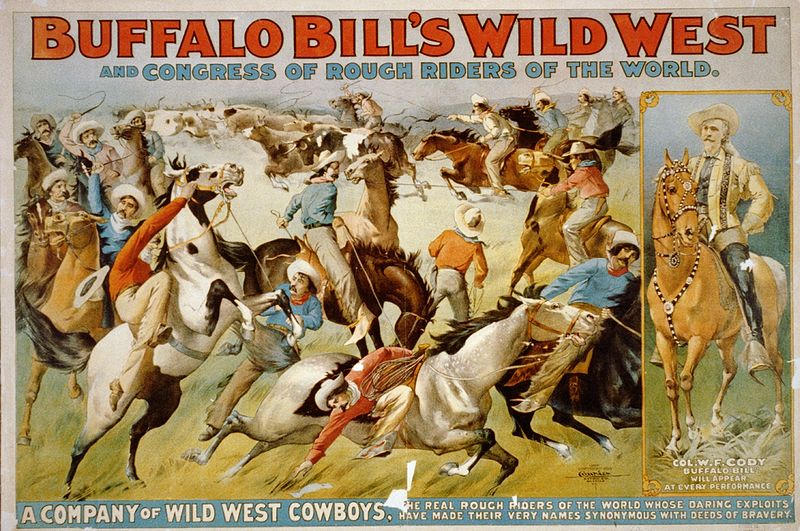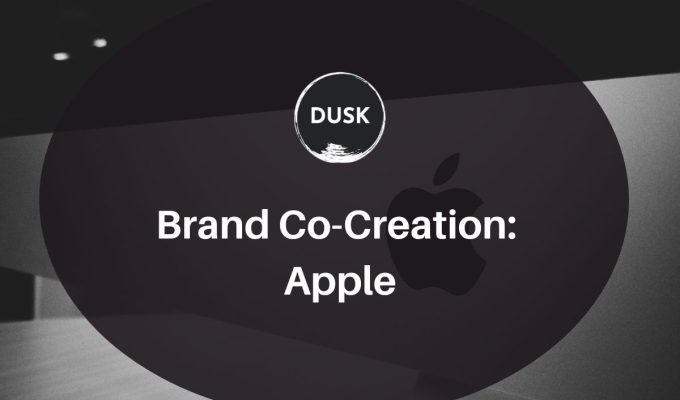Brands have been co-creating with their customers in one form or the other since the very beginning. The term co-creation regarding customers co-creating with their favorite brand was first coined by Neeli Bendapudi and Robert P. Leone. They referred to it as “customer participation in production.”
Even though economists have labeled and identified it reasonably recently, this doesn’t negate that brands have been co-creating long before we have seen a spike in research around the topic.
Think back to the times of Buffalo Bills Wild West Show. Step back into history to a crowded stand of spectators, there is the smell of roasting chicken, and Wild Bill is asking for a volunteer so one of his sharpshooters can shoot an apple off their head.
A gasp from the crowd followed by applause indicates that the stunt went successfully. This is rudimentary co-creation, folks.

However, despite historical brands engaging customers in different forms of co-creation, this phenomenon has been accelerated by digitalization and by influential brands using this as their strategy. As it picked up speed in the scholarly community and more businesses openly practiced co-creation, we arrive at today’s current brand climate, and it is dripping with co-creation.
Some examples of brands using co-creation are relatively easy to spot, while others require a little digging. However, with today’s major brands, it is safe to say that they engage in co-creation in one way or another.
The brand that I have been thinking about is Apple. How does Apple co-create?
Steve Jobs
I started to ponder whether Apple actively pursues co-creation with their loyal following because of Steve Jobs and his interesting sentiment with product design. His view, in a nutshell, is that customers don’t know what they want when you are building something new. Here are some of his famous quotes,
Some people say give the customers what they want, but that’s not my approach. Our job is to figure out what they’re going to want before they do. I think Henry Ford once said, “If I’d ask customers what they wanted, they would’ve told me a faster horse.” People don’t know what they want until you show it to them. That’s why I never rely on market research. Our task is to read things that are not yet on the page.
Steve Jobs
Or try this one on for size.
We have a lot of customers, and we have a lot of research into our installed base. We also watch industry trends pretty carefully. But in the end, for something this complicated, it’s really hard to design products by focus groups. A lot of times, people don’t know what they want until you show it to them.
Interview with Business Week- Steve Jobs
It would appear that Steve Jobs is independent of the customer in his thinking, and this is why I started to dig further into how Apple facilitates co-creation.
So how does Apple Co-Create?
I was drawing a blank until I stumbled across this blog post, Harvard Business Review. Apple does co-create indeed. They have a developers network where individuals or businesses can build apps and then receive the value created (revenue, utility, awareness). This app store has generated more than $25 billion for developers.
Also, the I watch allows customers to track their exercise routines and other related data points and also works with hospitals to use the watch for clinical work.
Alternatively, if you have ever personalized your Apple music account and built your playlists, this could also count as co-creation.
Final Words
Despite Steve Jobs’s lack of interest in co-creation, Apple did cross the bridge of co-creation when they opened up their App market to outsiders. Early Apple was keen on keeping their software proprietary, but now they are starting to co-create more. However, I would argue that Apple is one of the most well-known brands that co-creates the least, and people still love Apple.






